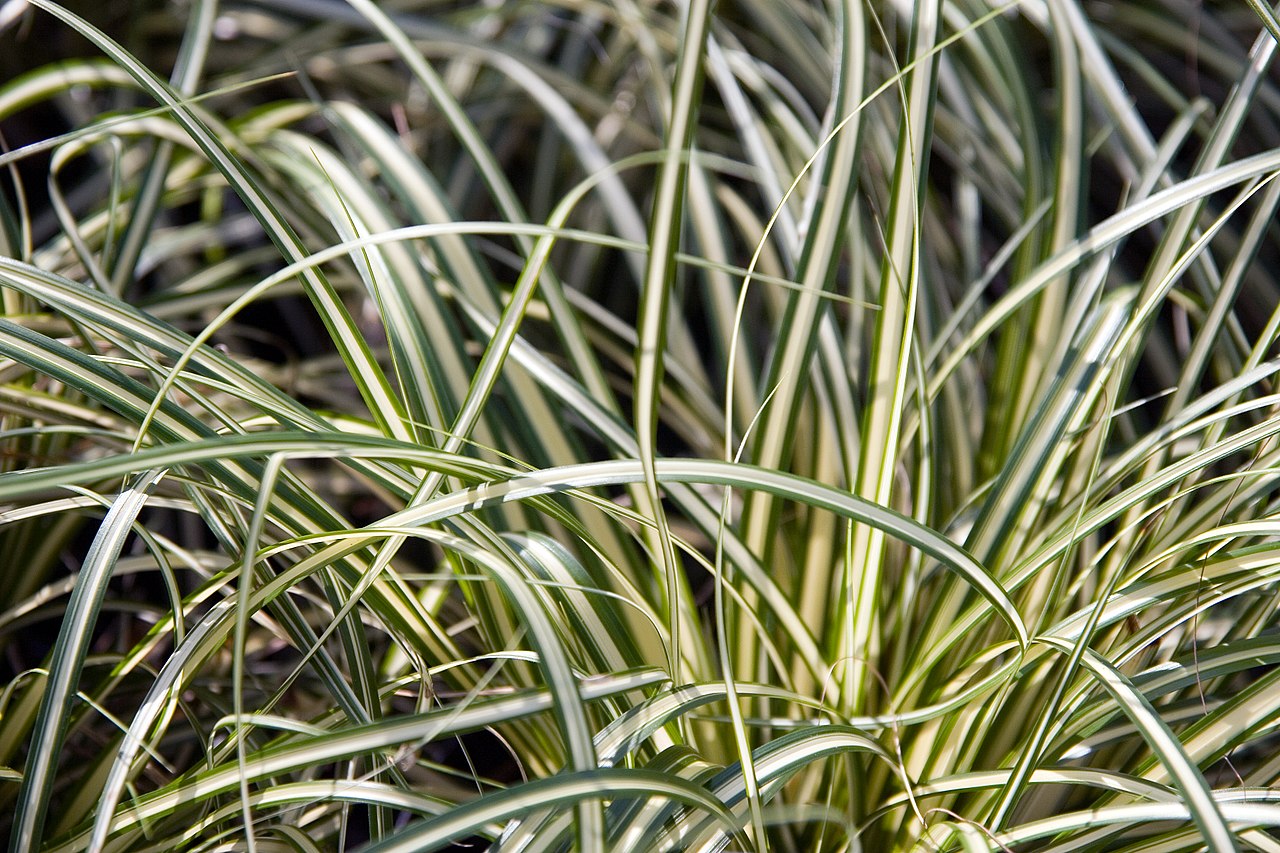
Image – Wikimedia Commons / David J. Stang
The carex they are herbaceous that do not need a great maintenance. They grow very quickly, and in any corner, so they are highly recommended as “plants to fill in” those gaps that have been left empty in the gardens, or to give them a more rustic touch but without losing an iota of elegance.
They are very attractive plants, which make the place where they are located look really beautiful. In addition, they do not have significant pests or diseases and do not require pruning, so They are ideal for people who do not have much experience caring for plants or who do not have much time to dedicate to them.
Origin and characteristics of the Carex
These are some plants evergreenthat is, they are constantly taking out new leaves while the older ones are wilting. The flowers appear grouped in spike-shaped inflorescences, which you can cut if you have or think you have an allergy to grass pollen as soon as you see them come out.
Shipping is very adaptableto the point that they grow in practically the whole world, except in most of Africa and Arabia. Thus, they can be planted in gardens where rainfall is low, or where temperatures are cold. As if that were not enough, due to their size they can also be kept in pots.
Main species
The most popular are:
Carex pendula

Image – Flickr / Leonora (Ellie) Enking
It is a species native to Europe that forms tall clumps between 180 and 250 centimeters. At its end it develops a spike, 16cm high if it is female, and that can exceed 25cm if it is male.

Related article:
Carex pendulum (Carex pendula)
Carex currency

Image – Wikimedia Commons / Marie DOOR
It is a species native to Europe, Asia and Africa, which forms clumps with stems up to 40 centimeters. The flowers are unisexual, and are grouped in spikes.
Carex testacea

It is a plant native to New Zealand that forms clumps up to 50 centimeters high. It has green leaves in spring, but they turn a coppery-orange color when mature. The spikes are small, brown in color.
Carex paniculata

Image – Wikimedia Commons / Françoise Carle
It is a plant native to Europe that form clumps between 40 and 150 centimeters high. Its leaves are green, and the flowers are grouped in small but very numerous spikes of brown color.
Carex muricata

Image – Wikimedia Commons / Julia Kruse
It is a plant native to Europe and Asia from among the 20 and 50 centimeters tall. Its leaves are green, straight, and somewhat rough on the edge. The flowers are unisexual, and they form spikes.
carex halleriana

Image – Wikimedia Commons / Luis Nunes Alberto
It is a species native to Western Asia, southern Europe and northwestern Africa that reaches a height of about 40 centimeterswith green leaves. The spikes are composed of whitish unisexual flowers.
Carex nigra

Image – Wikimedia / Matti Virtala
It is a plant native to central and southern Europe that reaches a height of about 30-40 centimeterswith green leaves. The spikes are small and blackish in color.
Its current scientific name is Carex parviflora.
Carex discloses

It is a plant native to Europe, except the extreme north, North Africa, West Asia and Macaronesia. Reach a height between 25 and 60sometimes 70, centimeters in height. The leaves are dark green, and the spikelets are 3 to 12cm high.
What are the care they require?
If we talk about its care, we are facing an ideal grass for beginners. But so that there is no doubt, below we will tell you how to take care of it:
Location
They are plants that must be abroadeither in full sun or in semi-shade.
Earth
- the garden: they grow in all types of soils, although they prefer those with good drainage.
- Flower pot: you can fill it with universal substrate for plants.
Irrigation
Carex are plants that are not very resistant to drought, so if you have it in the ground you can water it dailyespecially during the summer and / or if the climate in your area is very hot and dry.
On the contrary, if you are going to grow them in a pot, you must water them 2-3 times a week, and you can even put a plate underneath and fill it up.
Subscriber

Image – Wikimedia Commons / David Eickhoff
It is not necessarybut you can pay them with a universal fertilizer or with guano for example, following the instructions specified on the package.
Planting or transplanting time
In springwhen the frosts have passed.
Multiplication
In spring you can divide the bush to have new specimensor sow your seeds in individual pots with universal growing substrate.
Rusticity
It resists cold and frost well up to -18ºC. In addition, the wind does not harm them either.
What uses are they given?
The carex are used as ornamental plants. In gardens they look great as border plants, but in pots they can make any balcony, terrace or patio look very nice too.
You can buy seeds from here:
What did you think of the Carex?

